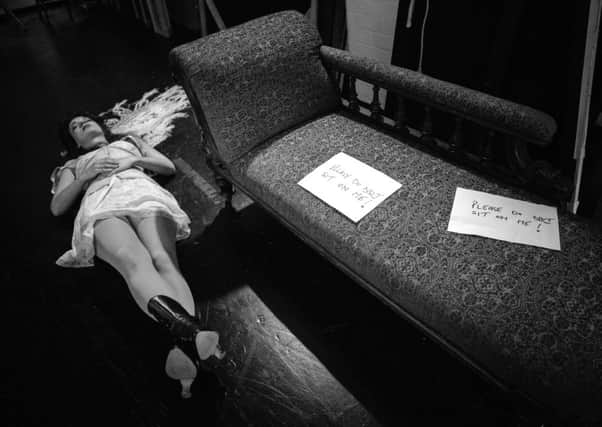Candid glimpse of opera world


THE world of opera is often perceived as being a little “exclusive” or inaccessible, but a new photography exhibition at the White Cloth Gallery in Leeds looks set to challenge those perceptions – and break down some barriers.
Behind the Curtain, which opened last week, is a collection of images by photographer Tom Arber who spent a week in residence with Opera North in September as the company prepared for a new production of Verdi’s La Traviata at Leeds’s Grand Theatre. Arber was given full backstage access for the project, and the photographs detail the final stage of rehearsals in the run up to the opening night, providing a glimpse into rarely seen behind the scenes areas and capturing moments backstage, on stage and in the wings. “The company wanted a fresh and new look at opera,” explains Arber. “And they wanted some more gritty shots behind the scenes. For me it’s been amazing – I spent a lot of my time running all over the theatre finding shots. I like it best when I don’t have any control over what is happening so that everything looks quite naturalistic.”
Advertisement
Hide AdAdvertisement
Hide AdThe photographs are a mixture of black and white and colour and are very atmospheric and evocative.
“I tend to find black and white easier to work with but I don’t really prefer one over the other,” says Arber.
“Black and white seems to work better in mixed lighting and especially backstage. Really it’s about creating a mood and a feeling. It’s also to distinguish between the full colour production shots and behind the scenes – although I did use colour in some of the backstage ones because of the make-up. And some of the costumes are so elaborate – it is nice to photograph them in black and white because you can see the shapes and textures more clearly.”
A self-taught documentary photographer, Arber shoots images of arts events and has worked with creative organisations such as the Leeds College of Music and The Hepworth Wakefield.
Advertisement
Hide AdAdvertisement
Hide AdHis grounding, however, was in live music venues – and that came in very useful when shooting backstage with Opera North. “When I was running a recording studio in Leeds, I got into photographing the bands in dark venues, so I feel at home in low lighting, taking photographs in technically tricky environments.”
There are 55 images in the exhibition which Arber selected from the 1,500 images that he shot.
“I generally take four pictures for every one, so it was hard,” he says. “The exhibition is divided into three sections. You have the dressing room shots of the performers getting ready, behind the scenes shots from the wings and then the front of house production shots. You start off in the backstage area and then move through to the front.” Arber says that he managed to effectively blend into the background so that he could capture some very candid and intimate shots. There is a lovely image of a young performer lying on the floor next to a chaise longue which has a note pinned to it that says ‘Please do not sit on me!’
“They generally just ignored me – which is what I wanted them to do. I tried to keep out of their way and they respected what I was doing.
Advertisement
Hide AdAdvertisement
Hide Ad“Every one of the performers – and those working backstage – has a specific job to do and even their sitting down or waiting time is really focussed. So it was quite easy for me to be ignored.”
• Behind the Curtain, White Cloth Gallery, Leeds, to February 1, 2015. www.whiteclothgallery.com